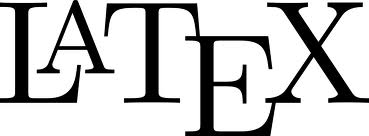Tex is a computer program and languaje created by Donald Knuth in 1977 he dedicated an entire year to do it. He basicaly aimed for two things when he did it and they were to get the highest quality and highest durability, since he wanted to revert the trend of deteriorating typographical quality that affected him during that time.
The Tex version we use today is the one relased in 1982 with some enhancements from 1989, since the last version was from 1990 when Knuth decided that that was it for TeX. So he released it as open source software and anyone could modify it, but as long as you change the name so you couldn’t name it Tex again. Doing it this ways he ensures that Tex would always produce the same out put and meets the same quality standards as always.
As an example of the quality we have that the smallest unit oh lenght handled by TeX is 0,000005356nm and it also understand about 300 low level commands or primitives.
Latex is (or should be) pronounced látej since you should know it comes from Greek Ji letter. And it is a very big set of macros that uses low level TeX primitives, since using TeX directly used to be a very complex task only done by the ones that knew TeX very well already. So this set of macros (known as a format) was originally developed by Leslie Lamport in 1983 and incorporates a more simple syntax the one that we use nowadays
Latex is not the regular known word processing where you also have to pay attention to the format while you write. Instead here you have clearly separated the content and styling. The main advantages is that it has an precise output (dvi, pdf), it prevents formatting errors since it is declared with a logical structure. Also it is modular since it works with packages, and it is to make global changes. Finaly it gives a professional output.
In the other hand it is not a WYSIWIG (what you see is what you get) like other word processors. It has to be compiled which means it has a syntax which in the beginning has a hard learning curve. And finaly if you want to desing a whole new layout it would take you some time.
Now lets talk of how to use some latex. To do this you will need: a text editor, a latex distribution for compiling it (latex installed in your system), and a pdf/dvi viewer to get to see the final results.
So the regular workflow when using latex is that you modify yourfile.tex with the text editor then with the latex processor you just get the yourfile.dvi (which is a portable document already since it is Device Independent file format) and finaly with drivers you could get a yourfile.pdf
The three most known latex distributions for the differents OS are:
– Tex Live (Unix like systems)
– MacTex (is TexLive with some mac additionals)
– MikTex (Windows)
Now let’s see simple document example:
\documentclass {article}
\begin {document}
Hello World ! This is a minimal \LaTeX{} document.
\end {document}
This is kind of a hello world in latex, which if we compile and generate the pdf we would just get a document with the text “Hello World ! This is a minimal LaTeX document.”
To compile it you could do it just with
$ latex yourfile.tex (gives you a dvi output)
$ dvips -o foobar.ps foobar.dvi (gives you a ps output)
$ pdflatex yourfile.tex (gives you a pdf output)

 es_ES
es_ES
Posted on January 3, 2012
0